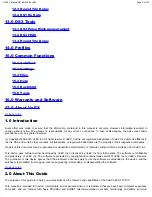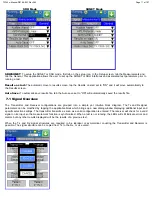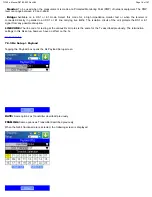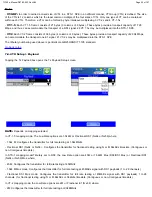
Changes to the Setup are applied immediately unless an invalid parameter has been selected.
When the Tx and Rx signal structures need to be independent or asymmetrical, uncoupling the transmitter and receiver is
possible. For example the Tx can be sending a PRBS of 2^ 23 -1 in a VT-1.5 carried within an optical OC-48, while the Rx can
be expecting to receive a PRBS of 2^23-1 in a 1.5 Mbit/s DS1 signal.
Hierarchy
- Allows the user to configure SONET, PDH/DSn(T-Carrier) signal and network types, including the bit rate and
higher order mapping if applicable.
Interface
- Allows the user to select optical or electrical test ports. Optical test ports apply to SONET signal types only, while
electrical ports can apply to STS-3 or PDH/DSn signals. Clock source and offset options are also configured in this screen.
Structure
- Applies to SONET signals only and allows the user to configure lower order mapping and the channel number
Payload
– Applies to both SONET and PDH/DSn signals and allows the user to configure low rate signal (if applicable) and
associated framing.
Pattern
- Applies to both SONET and PDH/DSn signals and allows the user to configure the test pattern to be used. Pseudo
Random Bit Sequences (PRBS) defined by ITU-T, fixed words and 24 bit user defined patterns are available. Pattern logic or
inversion is also possible.
Warning message
While a test is running, it is possible to view the signal configuration but it is not possible to change the setup or modify other
measurements settings on the fly. This warning screen is only shown during initial setup to alert the user.
7.2 PDH/DSn Transmitter Setup
7.2.1 Tx Setup > Hierarchy
Tapping the Hierarchy box opens the Tx Hierarchy Setup screen. The screen examples shown in this part of the manual depict
and describe the settings for 1.5M or DS1 signals. The options for other bit rates and modes are described in text format.
TX150 e-Manual D07-00-023 Rev A02
Page 12 of 107













































